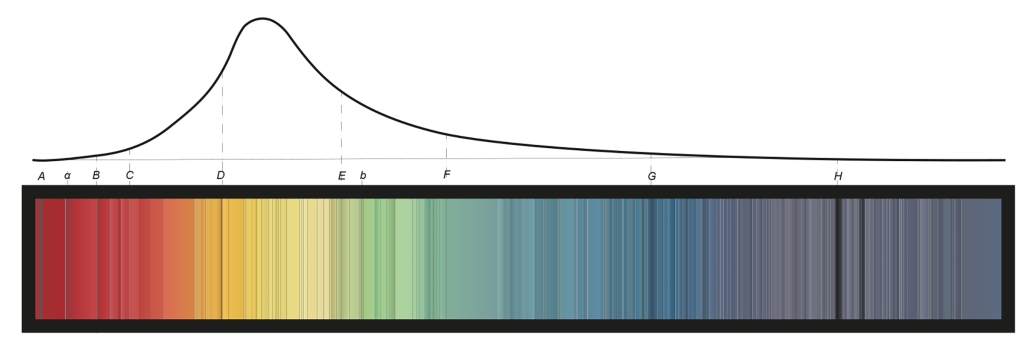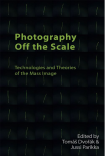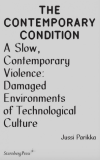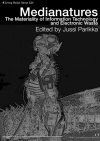Archive
Forthcoming in 2023: Operational Images
First signs of my forthcoming book Operational Images: From the Visual to the Invisual are online. Featured in the University of Minnesota Press new Spring /Summer 2023 catalogue.

An in-depth look into the transformation of visual culture and digital aesthetics
First introduced by the German filmmaker Harun Farocki, the term operational images defines the expanding field of machine vision. In this study, media theorist Jussi Parikka develops Farocki’s initial concept by considering the extent to which operational images have pervaded today’s visual culture, outlining how data technologies continue to develop and disrupt our understanding of images beyond representation.
Charting the ways that operational images have been employed throughout a variety of f ields and historical epochs, Parikka details their many roles as technologies of analysis, capture, measurement, diagramming, laboring, (machine) learning, identification, tracking, and destruction. He demonstrates how, though inextricable from issues of power and control, operational images extend their reach far beyond militaristic and colonial violence and into the realms of artificial intelligence, data, and numerous aspects of art, media, and everyday visual culture.
Serving as an extensive guide to a key concept in contemporary art, design, and media theory, Operational Images explores the implications of machine vision and the limits of human agency. Through a wealth of case studies highlighting the areas where imagery and data intersect, this book gives unprecedented insight into the ever-evolving world of posthuman visuality.
See here for the preface to the book.
The cover image includes a detail from Maria Constanza Ferreira’s video work.
Operational Images – Preface in the forthcoming book
I submitted the manuscript for the book Operational Images (part of our project Operational Images and Visual Culture) to the publisher, University of Minnesota Press. The book is forthcoming in 2023, but for those of you interested in a sneak preview, please find below the Table of Contents and the Preface (without the endnote references though) that starts the book.
Table of Contents
Introduction: Between Light and Data
Preface: Operational Images, All the Way Down
Chapter 1: Operations of Operations
Chapter 2: What is Not an Image? On AI, Data, and Invisuality
Chapter 3: The Measurement-Image: From Photogrammetry to Planetary Surface
Chapter 4: Operational Aesthetic: Cinema for Territorial Management
Chapter 5: The Post-Lenticular City: Light into Data
Chapter 6: A Soft Montage of Operations
Preface: Operational Images All the Way Down
This book focuses on operational images, a concept that first emerged in Harun Farocki’s audiovisual work (films and video installations) and writings. The often-voiced but almost as often insufficiently developed definition is simple, and it is already somewhat evident in the term itself: there are some images that primarily operate; they are not necessarily representational or pictorial. Operational images trouble what an image is, as far as it shifts from representational to non-representational, from the primacy of human perception of bodies, movement, and things to measurement, pattern, analysis, navigation, and more. They change the scales and terms of reference. Such images have an epistemic force, while they also are involved in an intervention in the world, whether directly or indirectly. These sorts of images fix epistemic details, but while they hold them in place, they also are mobile in ways that become an essential part of their institutional activity. These points are explored in the pages that follow.
Operational images appear most often in discussions of machine vision and automation of perception, where images are part of a broader system of analysis, identification, tracking, and destruction. The term operational image seemed to speak directly to the period from, roughly, the first Gulf War in 1990 to the current phase of military and security management of territories with drones as part of an ecology of observation, analysis, and surveillance. Even a brief survey of Farocki’s films and existing literature reveals these thirty years of militarized airspace and technological systems that incorporated much of the already existing logic of targeting would be a straightforward implication of the term. However, this is not to say that this book is primarily about war or airspace, or surveillance or drones–even if such are central parts of the theme that admittedly ranges much further in the past than just the context of smart weapons and machine-readability of landscapes, territories, and objects (including people). It was also not the sole interest in Farocki’s work, especially if we consider how, for him, operational images emerged in architectural modeling, traffic control systems, construction of affective environments such as malls, and other examples that have also paved the way toward current topics of AI culture. Furthermore, this book is also not merely about a particular class of images that emerge in high-tech contexts, even if, again admittedly, it is about visual culture and its transformation into invisual data culture. We are not seeking an aesthetics or politics of digital images. There are plenty of books on these topics already, and many of them are consulted and discussed in this one, too. Thus, there is no need to write yet another take on digital visuality or digital images, or perhaps even about visual culture.
This book is about a needed shift in emphasis to the operational image. From a discussion of the image, its particular formats, and even its functions, we move to a different, albeit closely related question that concerns operations, a key term that ties to infrastructures, logistics, and all manner of actions that function to sustain, mobilize, analyze, and synthesize the thing we have grown to call “images”. I am after the coupling of perception and action, of images that control, regulate, and amplify how bodies operate.[1]
Both perception and action are terms defined in the course of this book: perception is not tied to any natural experience, optical capacity, or even a technique, and the action in question is not necessarily only the here and now of a human body but defined by more tricky causalities–including a relation to the temporality of futures, future-pasts, recursions, and more. In other words, operations do not act only on the present but across a broader timescale, including a temporalization of space (e.g., in forecasting systems).
Allow me to offer a guiding rhetorical figure that should be considered throughout this book as part of its conceptual scaffolding.[2] Operationalism is already an established term in scientific methodological literature[3], but also consider the rather famous and often overused parable of the turtle at the base of the universe. The narrative comes and goes in different forms, this one written down in Carl Sagan’s Broca’s Brain:
“Some ancient Asian cosmological views are close to the idea of an infinite regression of causes, as exemplified in the following apocryphal story: A Western traveler encountering an Oriental philosopher asks him to describe the nature of the world: “It is a great ball resting on the flat back of the world turtle.” “Ah yes, but what does the world turtle stand on?” “On the back of a still larger turtle.” “Yes, but what does he stand on?” “A very perceptive question. But it’s no use, mister; it’s turtles all the way down.”[4]“
Instead of turtles, the history of photography, technical images, and visual media could be told in the same key: instruments built upon instruments, upon infrastructures, upon practices, upon techniques, upon further instruments and infrastructures, and so on. Operations built on operations that include elements that are material and semiotic, forms of knowing, and forms of mattering. As Geoffrey Winthrop-Young points out, such turtled ontology is also shared by the cultural techniques approach in media theory, concerned with “operational sequences involving actors, things and practices that, coming together, give rise to established cultural practices.”[5] Could the same then be said about the operational sequences involving images? That there is a fundamental relational ontology at play, one that could be described by way of scaffolding operations? At the very least, we can confidently concur with Michelle Henning when she writes that “[t]he Victorian idea of the photograph as an image that makes itself no longer holds sway.”[6] This applies to the specific fantasy of unmediated images drawn by sunlight and practices of sensing and registering signals as images and diagrams.
Joseph von Fraunhofer’s 1810s invention of the spectrometer–a later backbone of remote sensing and the analysis of materials through their spectral fingerprint–represents but one case from the alternative history of visual technologies. To verify and measure the dark lines existing in the solar spectrum–later named Fraunhofer lines–the spectrometer apparatus was an assemblage of multiple elements, camera-like technologies (six lamps and a shutter), a prism, and a modified theodolite: “an ordnance surveying instrument originally designed to measure angles for the production of maps.”[7] As Susan Schuppli writes: “His work would eventually come to be used by scientists to determine the chemical composition of a remote object–our sun, some 149.6 million kilometers away–not through direct testing but by treating it as an image, one whose chromatic variance could be translated into the complex language of chemistry.”[8] Treating the world as an image beyond its pictorial qualities is one key site where operations of epistemic value take place–but there are multiple operations already in place that produce such images. Fraunhofer’s laboratory set-up can be described as an essential part of the history of science of discovery of the qualities of the solar spectrum, but as an artificial set-up of said spectrum, it is also a microcosmos of light–even of interplanetary light. It is a simulation of the behavior of solar light, too, which then introduces the possibility of using this standardized view of the dark lines on the continuity of the spectrum to scale up and down across light and materials. All sorts of material instruments and scalar operations are piled upon each other, explicated and implied.
As photography (and yet not entirely just photography), Fraunhofer’s apparatus was a camera of sorts–one built like turtles on top of each other. I would go so far as to say that Fraunhofer’s apparatus represents one central instance of the history of operational imaging vis a vis remote sensing[9] and that what was captured was not a picture in the traditional sense but a microcosmos (or a condensation of its visual characteristics) through a detailed concrete arrangement that facilitated this diagram of the abstraction to emerge, and it demanded a precise need for accuracy in the placement of angles and distances, a measurement-operation in its own right.[10]

The recursive world of turtles and their relations–or camera-like instruments in laboratories and solar light–is a helpful figure of thought. At the same time, a more conceptual reference point for such operative chains of support is likely to be found in the theoretical work of cultural techniques and operative ontologies. But more on that later.
To answer the question that likely has emerged, what is this book about? It is not about turtles, but operations all the way down: images that exist only because of other operations–and the operations that help us to understand the transformation of images from visual to data. One could justifiably argue this point about cinema already, as Thomas Elsaesser speculates about Farocki’s interest in simulations as not a replacement of reality but a chain of synthesis–“the downward spiral of simulation of a simulation of a simulation”[11]–that pertains to cinema and post-cinema. In our case, we instead place emphasis on the operational transformation of the link between visuality, photography, spectral analysis, and data–a transformation that did not happen with digital culture, but circa 1900, as the story that follows will show you.

Photography Off the Scale is out
Our book Photography Off the Scale is out and available! Edited by myself and my FAMU colleague Tomáš Dvořák it offers an interdisciplinary perspective on the scale and quantity of images in contemporary visual culture. From the mass-image to post-photography, AI to online visual culture, planetary diagrams to LIDAR, the breadth of topics is wide. The book emerges from our Operational Images and Visual Culture project (FAMU, Prague – and funded by the Czech Science Foundation, 2019-2023).

Here are the really nice blurbs from Lev Manovich, Lisa Parks, and Peter Szendy:
“Among the many fundamental changes taking place in contemporary photography and media culture, probably the most important are changes in scale. The new magnitude of image production, the instant global dissemination of billions of new images, and the adoption of AI that turns these images into big data are only some examples of how the visual has been “scaled up” in the 21st century. Now we finally have a first book that rethinks the history and theory of photography through the lens of scale – and connects this concept to a range of others including measure, politics, gender, subjectivity, and aesthetics.”
– Lev Manovich, Presidential Professor, The Graduate Center, City University of New York
“Someone takes a picture somewhere in the world. Such a trivial action is multiplied by a trillion. Or much more, since the majority of pictures today are produced by machines for machines. This collection of essays brilliantly explores the unheard-of effects of scale on the ontology of photography and it touches upon the sublime of the infinity of digital images.”
– Peter Szendy, Brown University
“This book’s refreshing and much needed take on photography cuts through the infoglut and explores the apparatus, infrastructure, and operations of contemporary pictures. Addressing everything from snapshots to machine vision, Photography Off the Scale unfurls a vital field of technology, politics and aesthetics reshaping the world.”
– Lisa Parks, Distinguished Professor of Film & Media Studies, University of California-Santa Barbara
With Tomáš, we wrote a substantial introduction outlining the stakes of the approach – how it relates to scholarship in photography and links it to key questions of digital culture – and we are really pleased with the whole lineup of the book:
Introduction: On the Scale, Quantity and Measure of Images
Jussi Parikka & Tomáš Dvořák
Part I: Scale, Measure, Experience
1. The Mass Image, the Anthropocene Image, the Image Commons
Sean Cubitt
2. Beyond Human Measure: Eccentric Metrics in Visual Culture
Tomáš Dvořák
3. Living with the Excessive Scale of Contemporary Photography
Andrew Fisher
4. Feeling Photos: Photography, Picture Language and Mood Capture
Michelle Henning
5. Online Weak and Poor Images: On Contemporary Feminist Visual Politics
Tereza Stejskalová
Part II: Metapictures and Remediations
6. Photography’s Mise en Abyme: Metapictures of Scale in Repurposed Slide Libraries
Annebella Pollen
7. The Failed Photographs of Photography: On the Analogue and Slow Photography Movement
Michal Šimůnek
8. Strangely Unique: Pictorial Aesthetics in the Age of Image Abundance
Josef Ledvina
Part III: Models, Scans and AI
9. On Seeing Where There’s Nothing to See: Practices of Light Beyond Photography
Jussi Parikka
10. Planetary Diagrams: Towards an Autographic Theory of Climate Emergency
Lukáš Likavčan & Paul Heinicker
11. Undigital Photography: Image-Making Beyond Computation and AI
Joanna Zylinska
12. Coda: Photography in the Age of Massification
Joan Fontcuberta & Geoffrey Batchen
The book is published by Edinburgh University Press and is part of their Technicities book series. A special thanks to Elise Hunchuck for her outstanding expertise in helping us to fine-tune the writing and to Abelardo Gil-Fournier for the cover image that comes from his project Bildung.
For any inquiries about the book, review copy requests, etc, please contact me or Tomáš.
A Recursive Web of Models: Studio Tomás Saraceno’s Working Objects
My article on Studio Tomás Saraceno’s work is now out in the Configurations journal.

The text follows up from the Palais de Tokyo show On Air (curated by Rebecca Lamarche-Vadel) and I’ve tried to articulate these points in the article in a couple of different contexts. While there is clearly lots (more) to be said about questions of artistic practices with animals (including multispecies ethnography), and what that implies for the field of environmental humanities, I am here a tad more focused on the question of the image, the model, and the exchange between art and science. Admittedly, “art and science” is a rather low res description of many of the actual workings of what happens in such practices, which is also why I have mobilised the term working objects (hat tip to Daston and Galison) in this context (while I acknowledge that so much more could be said). And keep your eyes open for Sasha Engelmann’s work on Studio Saraceno’s work btw.
In the meantime, see also the video “Studio Visit with Tomás Saraceno“.
Narratives of a Near Future: Air
In December 2017, I gave one of the invited talks at the Geneva art school, HEAD. Under the main rubric of Narratives of Near Future, we were invited to address the Anthropocene. Mousse magazine wrote a review of the event and m y talk on air (and featuring a bit of Talking Heads) is now online and found here:
ScanLab – 3D Scanning and Materialities of Design
Here’s a nice video of ScanLab-group with Benjamin Bratton and Jordan Crandall (UCSD) talking about design, sensors and sensing. In the discussion, the issues of design are connected to the wider theme of the mechanical image and how visual culture is changing in the age of new visual techniques, such as (3D) scanning. The panel is part of an exhibition also we at WSA collaborated in curating, on Autonomous Sensing!
Deleuze and the New Humanities in Hong Kong
I will be speaking in Hong Kong in June and addressing Deleuze and digital culture. However, my argument is that instead of the usual suspect of starting with the Control Societies-text, Deleuze affords an understanding of the materialities of technological and scientific culture in many other ways too. As part of the geophysical materiality, we can talk about desire’s investment as an infrastructural issue of power – not ideology, just desire but that is infrastructurally effective.
Recursions: a new book series in media & cultural theory
 We are proud to announce the launch of a new book series titled Recursions: Theories of Media, Materiality and Cultural Techniques. Placed with Amsterdam University Press, a publisher known for its strong track-record in film and media studies, the series will publish fresh, exciting and important books in media theory. This includes both translations and other volumes that address the core themes outlined below. I am very excited about this project and working with my co-editors Anna Tuschling and Geoffrey Winthrop-Young. We have already some significant projects lined up for 2015 and more forthcoming that we will announce in the coming weeks and months. We are supported by a very strong international advisory board. Get in touch if you want to learn more but first read below for more information!
We are proud to announce the launch of a new book series titled Recursions: Theories of Media, Materiality and Cultural Techniques. Placed with Amsterdam University Press, a publisher known for its strong track-record in film and media studies, the series will publish fresh, exciting and important books in media theory. This includes both translations and other volumes that address the core themes outlined below. I am very excited about this project and working with my co-editors Anna Tuschling and Geoffrey Winthrop-Young. We have already some significant projects lined up for 2015 and more forthcoming that we will announce in the coming weeks and months. We are supported by a very strong international advisory board. Get in touch if you want to learn more but first read below for more information!
New Series Announcement
The new book series Recursions: Theories of Media, Materiality, and Cultural Techniques provides a platform for cutting- edge research in the field of media culture studies with a particular focus on the cultural impact of media technology and the materialities of communication. The series aims to be an internationally significant and exciting opening into emerging ideas in media theory ranging from media materialism and hardware-oriented studies to ecology, the post-human, the study of cultural techniques, and recent contributions to media archaeology.
The series revolves around key themes:
- The material underpinning of media theory
- New advances in media archaeology and media philosophy
- Studies in cultural techniques
These themes resonate with some of the most interesting debates in international media studies, where non-representational thought, the technicity of knowledge formations and new materialities expressed through biological and technological developments are changing the vocabularies of cultural theory. The series is also interested in the mediatic conditions of such theoretical ideas and developing them as media theory.
Forthcoming 2015
- Sybille Krämer – Medium, Messenger, Transmission: An Approach to Media Philosophy.
- Claus Pias – Computer Game Worlds.
Editorial Board
- Jussi Parikka (University of Southampton)
- Anna Tuschling (Ruhr-Universität Bochum)
- Geoffrey Winthrop-Young (University of British Columbia)
Advisory Board:
- Wendy Hui Kyong Chun (Brown University, US)
- Geert Lovink (Hogeschool van Amsterdam, The Netherlands)
- John Durham Peters (University of Iowa, US)
- Thomas Y. Levin (Princeton University, US)
- Marie-Luise Angerer (University of Arts Cologne, Germany)
- Eva Horn (University of Vienna, Austria)
- Markus Krajewski (University of Basel, Switzerland)
- Erick Felinto (State University of Rio de Janeiro, Brazil)
- Adalberto Müller (Federal University of Niterói, UFF, Rio de Janeiro)
- Eivind Røssaak (National Library of Norway)
- Steven Connor (Cambridge University, UK)
- Peter Krapp (UC Irvine, US)
- Antje Pfannkuchen (Dickinson College, PA, US)
- John Armitage (Winchester School of Art, UK)
- Till Heilmann (University of Siegen, Germany)
- Isabell Otto (University of Konstanz, Germany)
- Astrid Deuber-Mankowsky (University of Bochum, Germany)
- Sean Cubitt (Goldsmiths College, London, UK)
- Claus Pias (Leuphana University, Germany)
- Stefan Rieger (University of Bochum, Germany)
- Andrew Murphie (University of New South Wales, Sydney, Australia)
- Axel Fliethmann (Monash University, Melbourne, Australia)
- Yuji Nawata (Chuo University, Tokyo, Japan)
Authors’ information
Proposals welcomed
Proposals for monographs or edited volumes should kindly follow the standard AUP Proposal Form (http://en.aup.nl/en/service/authors) and should also include the envisaged table of contents, an overview of the volume and abstracts of the proposed chapters or articles.
Further information
If you are interested in publishing a book with us please contact Jeroen Sondervan, Senior Commissioning Editor for Film & Media Studies at j.sondervan@aup.nl or one of the series editors.
More information about Amsterdam University Press.
Cultural Techniques-special issue
Our book-length special issue on Cultural Techniques (Kulturtechniken) is out. Co-edited by Geoffrey Winthrop-Young, Ilinca Iurascu and myself, the special edition in Theory, Culture & Society is a significant introduction to the term that stems from German academic discussions in cultural and media studies. One could say it offers a significant variation on themes familiar from postwar German humanities’ focus on media, technologies and epistemo-ontological questions of culture in a post-representational and post-textual mode.
By way of some significant translations as well as new articles the issue pitches a way to understand cultural reality through its techniques. The usual definition is from Thomas Macho:
“Cultural techniques – such as writing, reading, painting, counting,
making music – are always older than the concepts that are generated
from them. People wrote long before they conceptualized writing
or alphabets; millennia passed before pictures and statues gave
rise to the concept of the image; and until today, people sing or
make music without knowing anything about tones or musical notation
systems. Counting, too, is older than the notion of numbers. To
be sure, most cultures counted or performed certain mathematical
operations; but they did not necessarily derive from this a concept
of number.” (Macho, 2003: 179)
But as the issue demonstrates, there is more in this mix. The multiplicity of positions and inplications is well articulated in Winthrop-Young’s Introduction to the issue. He articulates how not only in Macho, but in different ways in Cornelia Vismann’s and Bernhard Siegert’s work the constitutive role of cultural techniques functions. In fact, could say that this is the German media theory version of the hominization-thesis: how we become humans; how agency is constituted by cultural techniques which allow us to occupy subject positions. Space, enclosures and passages between them is one way to understand the idea:
“Thus the difference between human beings and animals is one that
could not be thought without the mediation of a cultural technique.
In this not only tools and weapons . . . play an essential role; so, too,
does the invention of the door, whose first form was presumably the
gate [Gatter] . . . The door appears much more as a medium of coevolutionary
domestication of animals and human beings.” (Siegert, 2012: 8)
Key here is the way in which cultural techniques process distinctions with material and aesthetic means. In Winthrop-Young’s lucid words, “Procedural chains and connecting techniques give rise to notions and objects that are then endowed with essentialized identities.Underneath our ontological distinctions (if not even our own evolution) are constitutive, media-dependent ontic operations that need to be teased out by means of techno-material deconstruction.” The implications for a range of recent years of theory-debates are intriguing; it refers to the fact how we need to address practices of theory and techniques of theory as part of the work of concepts and philosophy of contemporary culture. Besides it also shows some early ideas that resonate with a post-textual approach to cultural analysis (for instance in Sybille Krämer and Horst Bredekamp’s article).
I was asked to produce a short video abstract of my own contribution. In addition, find below the table of contents.
Special Issue: Cultural Techniques
Edited by Geoffrey Winthrop-Young, Ilinca Iurascu and
Jussi Parikka
Articles
Cultural Techniques: Preliminary Remarks by Geoffrey Winthrop-Young
Culture, Technology, Cultural Techniques – Moving Beyond Text by Sybille Krämer and Horst Bredekamp
Second-Order Animals: Cultural Techniques of Identity and Identification by Thomas Macho
Cultural Techniques: Or the End of the Intellectual Postwar Era in German Media Theory by Bernhard Siegert
After Kittler: On the Cultural Techniques of Recent German Media Theory by Bernard Dionysius Geoghegan
Cultural Techniques and Sovereignty by Cornelia Vismann
The Power of Small Gestures: On the Cultural Technique of Service by Markus Krajewski
Zootechnologies: Swarming as a Cultural Technique by Sebastian Vehlken
From Media History to Zeitkritik by Wolfgang Ernst
Afterword: Cultural Techniques and Media Studies by Jussi Parikka
Review Article
Files, Lists, and the Material History of the Law by Liam Cole Young
A Hefty Companion
 A Companion to New Media Dynamics is out now. And admittedly, it is quite expensive. But try to get your library to order a copy, as it does contain some really handy chapters on media culture, networks, politics of platforms, mobility, and more! I just finished reading a nice Sean Cubitt-piece (on media studies and new media studies), and will continue with some of the other great looking texts.
A Companion to New Media Dynamics is out now. And admittedly, it is quite expensive. But try to get your library to order a copy, as it does contain some really handy chapters on media culture, networks, politics of platforms, mobility, and more! I just finished reading a nice Sean Cubitt-piece (on media studies and new media studies), and will continue with some of the other great looking texts.
I co-wrote with Tony Sampson a piece on spam, network virality and contemporary capitalism and marketing: “Learning from Network Dysfunctionality: Accidents, Enterprise and Small Worlds of Infection”. It continues our joint interests into networks as well as viral capitalism, but with a specific Tardean twist.




















